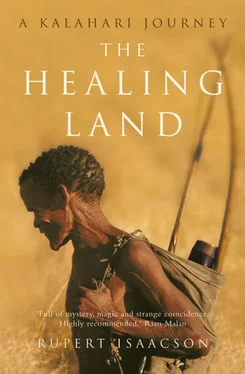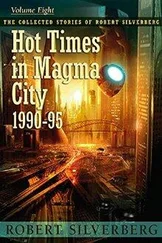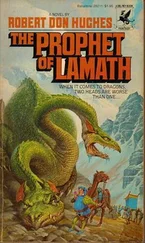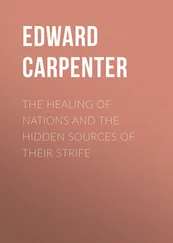Frank, his wife Margaret and his three sons were all fervent Christians. That evening, the initial exchanges of family news done, Frank fixed his grey seer’s gaze on me and asked: ‘So, at what stage of your spiritual odyssey are you?’
I did not know how to answer, but hid my discomfort behind a façade of chatty, light-hearted banter. Later, not knowing quite what to do with me, Frank enlisted my help in the new house he was building down on the valley floor. I was not handy with tools, knew nothing about mixing cement, dropping plumb lines, fixing car engines, laying pipes, nor even how to change a flat tyre. I began to realise how unrealistic I had been to dream of just floating into the Kalahari of my childhood stories.
Frank had been in Botswana just over twenty years, having left a prosperous family farm in South Africa to come – missionary-like – and devote himself to improving the lot of Botswana’s rural poor. Foremost among these were the country’s Bushmen, most of whom, I learned, had lately been reduced to pauperdom through a sudden upsurge in cattle ranching. During the 1970s, Frank told me, foreign aid money had come pouring into Botswana, and the cattle-owning elite of the ruling BaTswana tribe had used it to carve roads into previously unreachable areas, and to put up wire fences and sink boreholes. The result, for the Bushmen, was disastrous. The game on which they had traditionally relied was killed if it approached the new boreholes, and prevented by the new fences from following the rains. The animals died along the wire in their hundreds of thousands. With the exception of a few clans still living outside the grasp of the ranchers, most of the Bushmen had found themselves, within a few years, enclosed by wire, their age-old food source gone, reduced to serfs looking after other people’s cattle on land that had once been their own.
In the first few years after his arrival in Botswana, Frank had set up several non-profit-making businesses: textile printing, handicrafts, small-scale poultry farms and the like. But these had been mere preliminaries to his real mission. It seemed to him that for the Remote Area Dwellers (as the Botswana government called the Kalahari peoples, Bushman or otherwise), the real way out of destitution lay not in learning to be Westerners, but in marketing the wild foods and medicines that they had been gathering in the bush since time immemorial. It seems a simple enough idea – agroforestry – but back then it was revolutionary. At that time, most NGOs (non-governmental organisations) were trying to turn indigenous people into farmers or small businessmen. The eco-terms that we now take for granted had yet to be coined. Frank was ahead of his time.
Frank borrowed money and established a small nursery of wild, fruit or medicine-producing shrubs and trees beside his house. He had found that these indigenous plants bore fruit even in drought years, and did not exhaust the dry Botswana soil if planted and harvested year to year, as maize and livestock did. He was convinced that the Kalahari peoples could take these traditional plants beyond mere subsistence, that they could be cultivated for both survival and cash, and that there might even be a market abroad for them. The problem was funding.
Listening to Frank explaining all this convinced me that he was the man to take me into the Kalahari. I tried a tactful approach – perhaps I could accompany him on one of his forays into the heartland? But no, came the answer, he was too busy for the next month or two to take any trips into the interior. However, one night his two elder boys (Michael and Peter, already experienced and bushwise at ten and twelve years old) took me up to sleep out on the wild ridge top. Sitting around the fire – which they could kindle, and I could not – they told me stories about the journeys they had made with their father into that interior. I listened intrigued, intimidated and envious that these boys, not yet in their teens, should have experienced so much of what I longed to experience. At dawn, I got up and went by myself to look out over the vast, wild flat lands that yawned away below – the emptiness, the reds and browns and angry dark burnt umber of the rocks and bare trees. I raised my arms in greeting to that harsh land – the land of my fathers.
I bid the Taylors goodbye and went back eastward into Zimbabwe, where my grandfather had arranged for me to stay on a ranch some hours north of Harare. There I was in heaven: I rode horses, handled guns, shot and killed an antelope and felt a surge of genuine bloodlust as I did so. I swam and fished, drank beer and laughed at jokes about blacks and women. I began to understand how my forebears had reinvented themselves, from Litvak Jew to rich auctioneer, from Somerset peasant to empire builder. Then, one hot morning while I was in the swimming pool, reality returned with a bump. Hearing shouting, I surfaced just in time to see my white rancher host land first one fist, then another, in the face of one of his Shona farmworkers who, it turned out, had been AWOL on a drunken binge and had now shown up for work again, useless and reeking.
Later, the ranch’s black foreman and I were sent to round up a steer for slaughter. We cut a half-grown calf out of the herd and drove it into a corral, where a ring of farmworkers lined the outside of the fence, waiting to see the baas make the kill. The big red-faced man wandered into the corral with a rifle and took aim, pointing the barrel at the flat space between the steer’s eyes. What would happen, I wondered, if the bullet missed and hit one of the farmworkers? But his aim was true. He fired, and a fountain of bright blood erupted from the beast’s head. It did not fall down however; instead it stood, staring through the crimson blood that now pumped from the round hole between its eyes. The rancher shot again, still the steer stood there. He shot a third time. Again the beast did not fall, but kept its feet, swaying, its face a stunned mask of gore. Quickly the foreman reappeared, ducked through the bars of the corral with a huge butcher’s knife in his hand, walked briskly up to the dazed, wounded beast and slit its throat. Blood poured out as if emptied from a bucket, the steer letting out a long death-bellow as the life drained out of the jagged cut. It remained standing until the blood stopped flowing, then crashed onto its side, dead at last.
Realising that I was too squeamish for life on an African farm, I left the guns in their locked cabinet and took long walks with the farm boys, who would show me animals and birds and tell me their names in Shona.
The following year, I travelled to Africa again, and this time went ranging over the great sub-continent, visiting all the places of the family stories, before taking a truck up into East Africa to witness the great wildebeest migration of the Serengeti.
But then I left Africa alone for a while, spending a couple of years adventuring in North America and then trying to establish myself as a freelance journalist in London. The need to identify with the land of my fathers seemed to diminish, become less pressing. A constant presence, but no longer an urgent one.
Then one day, out of the blue, a distant Loxton cousin from Australia wrote to my mother, saying that he had spent ten years researching the family and now wanted to put all the clan back in touch with each other. Among his researches, he had traced the Baster Loxtons, the coloured branch of the family, to a wine farm outside a small town called Keimos, at the southern edge of the Kalahari.
It seemed that they had prospered, and had, against the odds, managed to hold onto their land all through the apartheid years despite several attempts by the white government to dispossess them. Their farm, Loxtonvale, extended along several islands of the great river, where the original Baster kapteins had established their stationary pirate strongholds. Gert and Cynthia Loxton had transformed the islands into vineyards and orchards where they produced Chardonnay and sultana grapes and fruit. They also had a cattle ranch up in the southern fringe of the Kalahari.
Читать дальше












